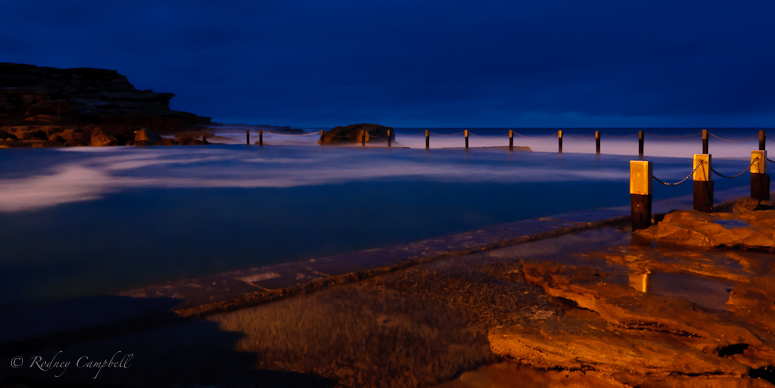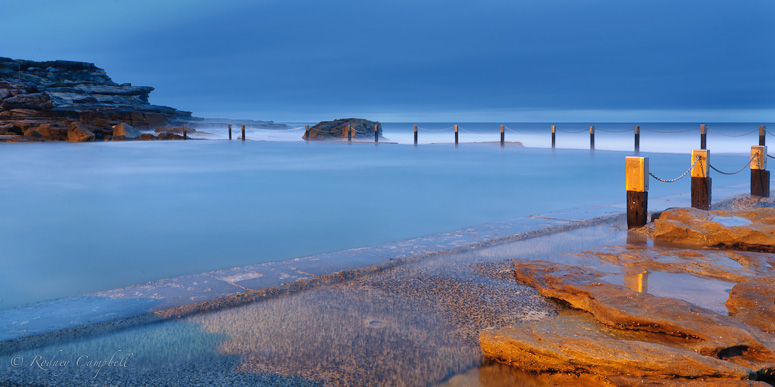Hi Rod,
Remorhaz wrote:I'm completely happy to have this discussion and also to have these two images referenced for the discussion - it was sort of why I posted them both - I felt that whilst I thought that the second image had a better 'exposure', by my definition above, but that I much preferred the look of the first (although to be honest I did have to rescue it quite a bit - the as shot histogram was practically all bunched at the very left - I felt it probably could have done with an extra stop or so of exposure in camera to get it more like you see here to start with and then play from there).
Ok ... let's start here ....
"The shot histogram was practically all bunched at the very left" ....
That's what I would expect. The scene is a dark scene - pre-dawn - and as such, what you are seeing is correct for the scene in question.
Peanut wrote:I agree that histograms are just tools... Knowing what a histogram looks like is interesting, but emotions come from the image, not the histogram...
A very important point ...
But here's the meat and potatoes:
If I shoot my small brown dog on a sunny beach (and it's not a close-up portrait), a bell shaped histogram would be an underexposed and dark shot. A better looking image would have a small clump in about the left third, not much in the middle and a much larger peak up in the right third, but not running off the end.
The opposite is true as well... A moonlit scene, or a pre-dawn scene, with only a few light elements that captures the feeling of light beginning to fight off the dark is likely to still have lots of deep shadows and a couple of lighter elements, so it's histogram might have much more of its weight in the left third, and only a few sections in the right half...
Precisely!
While, for a daylight scene, the bell-curve that you were trying to achieve is appropriate, the images presented here were not daylight scenes. Despite that, the second image has been "distorted" to large extent, exposure wise, to the point where it appears, to me, to look like a daylight scene.
As noted so astutely by Peanut, the histogram is a tool - one of many - that we can use to help us determine some elements of an image. As also noted by Peanut, and also by Suren and others, we also have the emotion within an image that we should try to take account of. I would even contend that it's a more important element than "correct" exposure, whatever that might happen to be.
In the first image, you have the emotion. You also state that you like it better. it has drama, light and shade, and the histogram, correctly (IMHO) reflects these elements. While I wasn't there, this is an image that more correctly displays what I would be expecting to see from a pre-dawn shot.
The second image has a flatter histogram, but not a lot else.

It's lost the shading, and it's lost the drama. It certainly doesn't look, to me, as if it's what I would be expecting to see in a pre-dawn image.
In summing up, I think that while it's fair to accept that the concept of "correct" exposure is a very subjective thing, in using tools like an exposure meter or histogram, we also need to keep in mind the image's context. I come up against a similar problem when shooting bands in bars ... the lighting is very poor, with very high dynamic range. Forget HDR, as you encounter rapidly moving subjects, areas that are totally unlit and areas that are lit with coloured spots.
Set for default metering
modes, the camera screws it up all the time, and I'm left with bland, thin, underexposed images. When I switch to spot metering, and expose for a well illuminated subject, one that properly should be the prime subject of the image, I then get a rich image, properly exposed (whatever that might mean) but with a histogram that might look like crap.

Your pre-dawn shot presents similar challenges. Decide what your prime subject will be; ensure that you're exposing to get a good clean image of that item, and the rest will follow. Check the histogram, but check it for reasonableness too: if the image has large dark areas, then the histogram should correctly display those properties.
Am I making sense?





